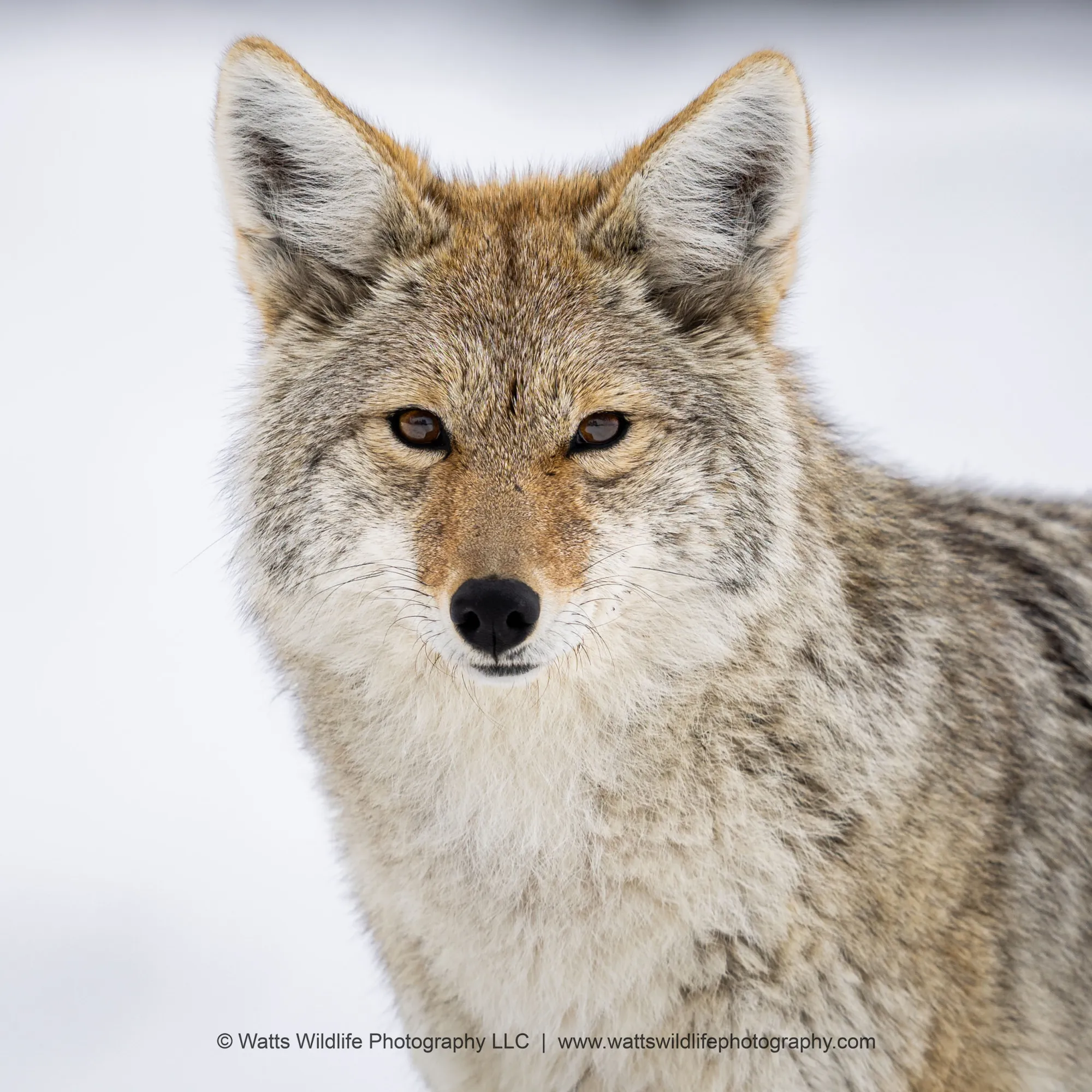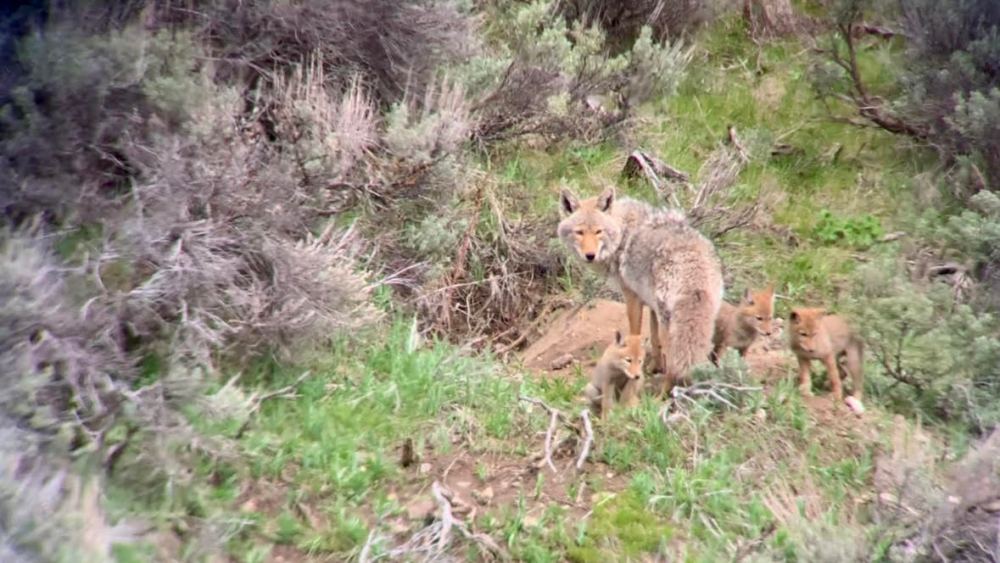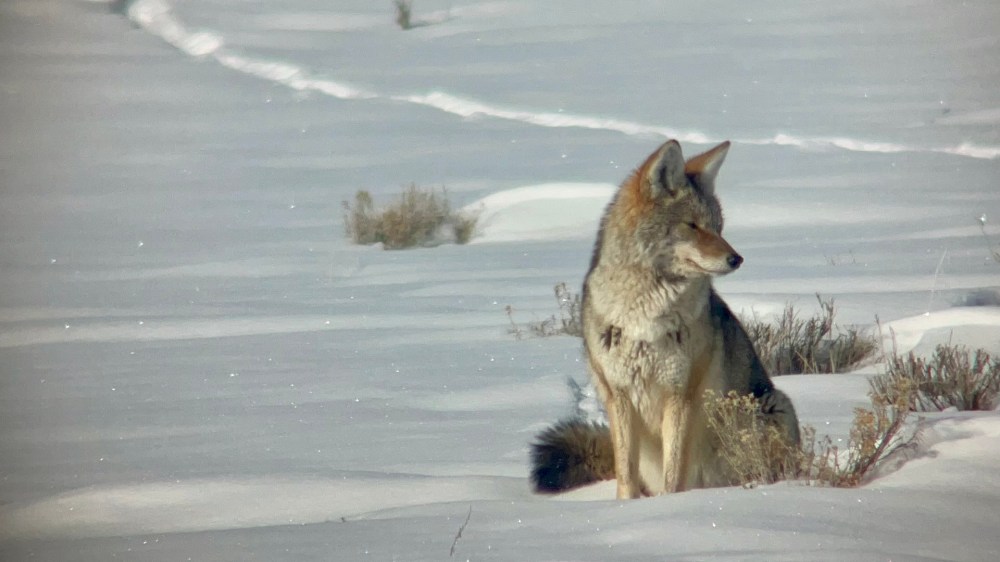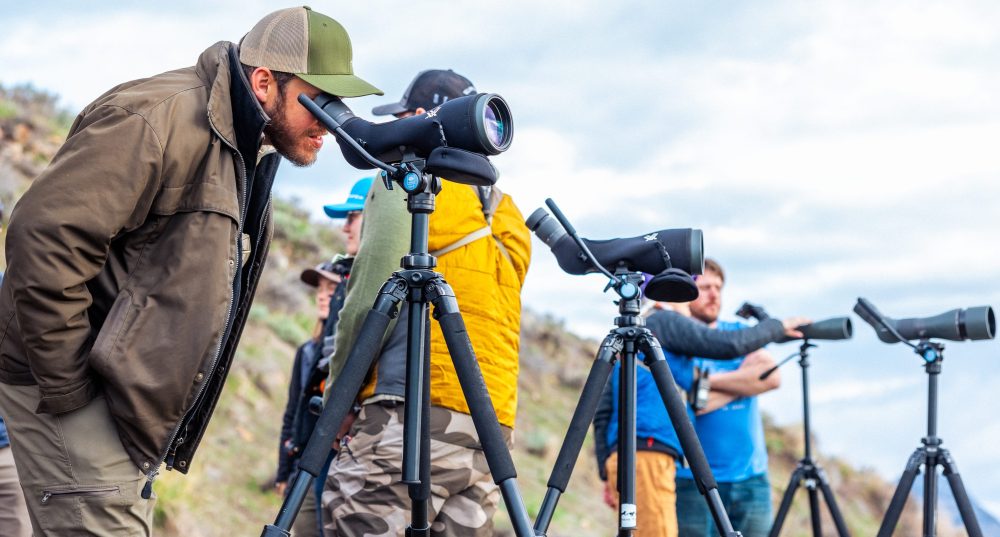Coyote: The Unsung Hero of Yellowstone

Featured image (mobile) courtesy of Evan Watts
There is an unsung and oft-overlooked hero of Yellowstone National Park, and its name is Coyote (Canis latrans). Being widespread across the United States, many visitors overlook them in their frantic pursuit of a wolf sighting. However, by observing coyotes going “about their business,” you will see that coyotes are intelligent, adaptable creatures that absolutely belong on the landscape. Throughout history, there have been differing perspectives regarding coyotes. In many Western Native American folklore and rituals, coyotes were highly revered for their intelligence and cunning. They are depicted in numerous Native paintings, garments, and traditional artifacts. When European Americans came onto the scene shortly after the establishment of Yellowstone in 1872, the script was flipped. The animal known to many Indigenous tribes as “song-dog,” and for some–the center of creation myths, was transformed almost overnight by white settlers into nothing more than vermin and pests – destined to be killed on sight.
During European settlement in the west, including Yellowstone, wolves were also targeted and ultimately hunted into extinction in the lower 48. Despite intense efforts to eradicate coyotes, these wily critters persevered, allowing them to continue—and expand—their necessary role in Yellowstone’s ecosystem. For example, coyotes hunt animals known for harboring diseases and parasites (such as ticks). By regulating rodent populations, the coyote significantly decreases the opportunity for ticks to feed and reproduce and prevents overpopulation of vegetation-decimating animals such as rabbits. Coyotes also help “clean up” the landscape by scavenging on carrion, allowing those nutrients to be re-distributed to the ecosystem.

This coyote is hunting rodents in the subnivean zone of the snowpack. Coyotes help keep small mammal (mice, voles, rats, ground squirrels, rabbits) stable. Photo courtesy of Rob Harwood.
Before the re-establishment of wolves in Yellowstone beginning in 1995, coyotes thrived as the “top dog” in the park. They filled the roles both scavenger and hunter, preying on weakened deer and elk, smaller mammals and birds. However, when wolves were reintroduced in 1995, the coyotes were forced to adapt, pivot, and return to a niche now unfamiliar to them. This created new challenges for the coyotes, as wolves once again took over as the dominant species, fiercely protecting their territories and food resources. Wolves have little patience for the smaller canine, often killing coyotes to minimize competition.
Despite the challenges they faced, coyotes didn’t give up. They bounced back, demonstrating remarkable adaptability, intelligence, and willingness to ‘think outside the box.’ Coyotes seem to have ‘made their peace’ with the presence of humans and remain willing to travel near (or on) the road to avoid encounters with wolves. And coyotes are opportunistic feeders. By remaining flexible, they have expanded their diet to include more small mammals, lizards, fish, and even insects–exploiting niches that wolves are less likely to target. They have learned the hierarchy of feeding at carcass sites and remain willing to wait until wolves have moved on before creeping in for a bite. And remarkably, it’s been shown that when coyote populations decline, they respond by having larger litters. This allows populations to rebound much faster and means the more coyote numbers drop, the likelier the remaining ones are to make more. This resilience and adaptability of coyotes in the face of challenges is inspiring.

The average coyote litter size is 4-7 when populations are stable, but can increase to 13 when faced with external pressures, (such as the wolf reintroduction) causing population decline. Photo by Tyrene R.
Coyotes also learned to hunt in larger groups, or “packs,” in the absence of wolves. This suited them well when they were the big dogs in the park. With the wolf’s return, however, new generations of coyotes have returned to a more typical hunting strategy of (generally) solitarily singling out prey. This behavior reduces their competition with wolves for larger prey and, in turn, has allowed them to hone their craft as solo hunters. Over the last three decades, coyotes have learned to stay on high alert for wolves. Some have abandoned their favorite hunting grounds to protect themselves. By adjusting to wolves in these ways, coyotes have successfully reduced surprise encounters, enhancing their survival rates. And coyotes—ever the cunning critters—have quite effectively upped their scavenging game. By remaining patient and waiting at the edges of a wolf kill until the wolves have stuffed themselves, or occasionally working together to create confusion to draw wolves away from a carcass for feeding opportunities, coyotes have benefited from the high food reward that scavenging can provide. This opportunistic change in behavior continues to give the coyotes a reliable food source with far less risk.

This coyote was able to feed easily for several minutes before this wolf emerged and ran it off. The coyote remained alert while eating and was able to avoid injury. Still shot from video captured by YW Guide, Laura L.
The presence of wolves in Yellowstone has had far-reaching effects on the ecosystem, and coyotes have been instrumental in these dynamics. With their increased adaptability, coyotes help maintain a balance among smaller predator and prey populations. Their scavenging activities contribute to recycling nutrients back into the ecosystem, benefiting various species. Coyotes have been crucial in filling specific ecological roles post-wolf reintroduction, highlighting their importance in the Yellowstone ecosystem. And finally, due to the adjustments made by coyotes to accommodate living with their larger cousins, their population today has returned to pre-wolf numbers.

A coyote enjoys a moment basking in the winter sun in Yellowstone’s Lamar Valley. Photo by Tyrene R.
The story of coyotes in Yellowstone National Park is a testament to nature’s resilience and adaptability. Despite the challenges they faced with the return of wolves, coyotes have survived and thrived, adjusting their behaviors and ecological roles in remarkable ways. So the next time you see a coyote – in Yellowstone or at home – take a moment to consider the incredible cleverness, cunning, and opportunistic nature of these small predators. And ask yourself, is it really “just” a coyote? Or is it a shining example of the best of nature’s handiwork? Perhaps, this is yet another perspective to consider.
Blog by YW Naturalist Erik B.

To learn more about Erik and the entire YW Naturalist Staff, head to the “About Us” page on our website

